-
 +16 +1
+16 +1From wolf to chihuahua: new research reveals where the dingo sits on the evolutionary timeline of dogs
The first high-quality Australian dingo genome gives a multi-thousand-year-old snapshot into the evolutionary history of dogs.
-
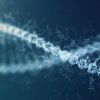 +17 +1
+17 +1The Human Genome Is Finally Fully Sequenced
Researchers are excited by the potential it holds
-
 +7 +1
+7 +1Matching drugs to DNA is 'new era of medicine'
Testing can predict if drugs will work, fail or become deadly, depending on differences in our make-up.
-
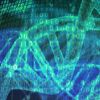 +21 +1
+21 +1Guinness World Record Awarded for Fastest DNA Sequencing
Guinness World Records presented a Stanford University-led research team with the first record for fastest DNA sequencing technique — a benchmark set using a workflow sped up by AI and accelerated computing.
-
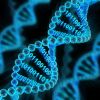 +19 +1
+19 +1Adding new letters to DNA alphabet doubles density of data storage
As with most things, nature’s data storage system, DNA, far surpasses anything we’ve created. Now, researchers at the University of Illinois Urbana-Champaign have doubled its already incredible storage capacity by adding extra letters to its “alphabet,” and developed a new way to read it back.
-
 +11 +1
+11 +1DNA has a 521-year half-life
Few researchers have given credence to claims that samples of dinosaur DNA have survived to the present day, but no one knew just how long it would take for genetic material to fall apart. Now, a study of fossils found in New Zealand is laying the matter to rest — and putting an end to hopes of cloning a Tyrannosaurus rex.
-
 +26 +1
+26 +1New technology lets police link DNA to appearance and ancestry – and it's coming to Australia
The Australian Federal Police recently announced plans to use DNA samples collected at crime scenes to make predictions about potential suspects. This technology, called forensic “DNA phenotyping”, can reveal a surprising and growing amount of highly personal information from the traces of DNA that we all leave behind, everywhere we go – including information about our biological sex, ancestry and appearance.
-
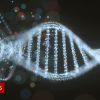 +23 +1
+23 +1Scientists claim big advance in using DNA to store data
Scientists say they have made a major step forward in efforts to store information as molecules of DNA, which are more compact and long-lasting than other options. The magnetic hard drives we currently use to store computer data can take up lots of space. And they have to be replaced over time. Using life's preferred storage medium to back up our precious data would allow vast amounts of information to be archived in tiny molecules.
-
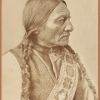 +16 +1
+16 +1Living descendant of Sitting Bull confirmed by analysis of DNA from hair
A man’s claim to be the great-grandson of legendary Native American leader Sitting Bull has been confirmed using DNA extracted from Sitting Bull’s scalp lock.
-
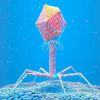 +24 +1
+24 +1Viruses are both the villains and heroes of life as we know it
Viruses have gotten a bad rap for the many illnesses and pandemics they’ve caused. But viruses are also genetic innovators – and possibly the pioneers of using DNA as the genetic blueprint of life.
-
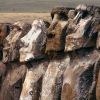 +11 +1
+11 +1DNA offers a new look at how Polynesia was settled
Modern genetic evidence suggests that statue builders on islands such as Rapa Nui, also known as Easter Island, had a shared ancestry.
-
 +22 +1
+22 +1DNA Has Four Bases. Some Viruses Swap in a Fifth.
The DNA of some viruses doesn’t use the same four nucleotide bases found in all other life. New work shows how this exception is possible and hints that it could be more common than we think.
-
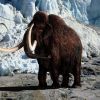 +14 +1
+14 +1A New Company With a Wild Mission: Bring Back the Woolly Mammoth
With $15 million in private funding, Colossal aims to bring thousands of woolly mammoths back to Siberia. Some scientists are deeply skeptical that will happen.
-
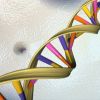 +14 +1
+14 +1Britain begins world's largest trial of blood test for 50 types of cancer
Britain's state-run National Health Service will on Monday begin the world's biggest trial of Grail Inc's flagship Galleri blood test that can be used to detect more than 50 types of cancer before symptoms appear.
-
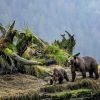 +10 +1
+10 +1‘Mind blowing’: Grizzly bear DNA maps onto Indigenous language families
The bears and Indigenous humans of coastal British Columbia have more in common than meets the eye. The two have lived side by side for millennia in this densely forested region on the west coast of Canada. But it’s the DNA that really stands out: A new analysis has found that the grizzlies here form three distinct genetic groups, and these groups align closely with the region’s three Indigenous language families.
-
 +16 +1
+16 +1Las Vegas murder case cracked with smallest ever amount of DNA
The 1989 murder of a 14-year-old girl in Las Vegas has been solved by using what experts say is the smallest-ever amount of human DNA to crack a case. Stephanie Isaacson's murder case had gone cold until new technology made it possible to test what little remained of the suspect's DNA: the equivalent of just 15 human cells.
-
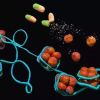 +13 +1
+13 +1Rapamycin changes the way our DNA is stored
Our genetic material is stored in our cells in a specific way to make the meter-long DNA molecule fit into the tiny cell nucleus of each body cell. An international team of researchers at the Max Planck Institute for Biology of Aging, the CECAD Cluster of Excellence in Aging Research at the University of Cologne, the University College London and the University of Michigan have now been able to show that rapamycin, a well-known anti-aging candidate, targets gut cells specifically to alter the way of DNA storage inside these cells...
-
 +21 +1
+21 +1A New Gene Editing Tool Could Rival CRISPR, and Makes Millions of Edits at Once
With CRISPR’s meteoric rise as a gene editing marvel, it’s easy to forget its lowly origins: it was first discovered as a quirk of the bacterial immune system.
-
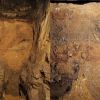 +26 +1
+26 +1Neanderthal DNA extracted from cave dirt shows population movements 100,000 years ago
Where ancient humans lived — and when — can be unveiled using DNA extracted from sediment layers dug from cave floors.
-
 +23 +1
+23 +1Now We Know Why Platypus Are So Weird - Their Genes Are Part Bird, Reptile, And Mammal
The first complete map of a platypus genome has just been released, and it's every bit as strange as you'd expect from a creature with 10 sex chromosomes, a pair of venomous spurs, a coat of fluorescent fur, and skin that 'sweats' milk.
Submit a link
Start a discussion




















